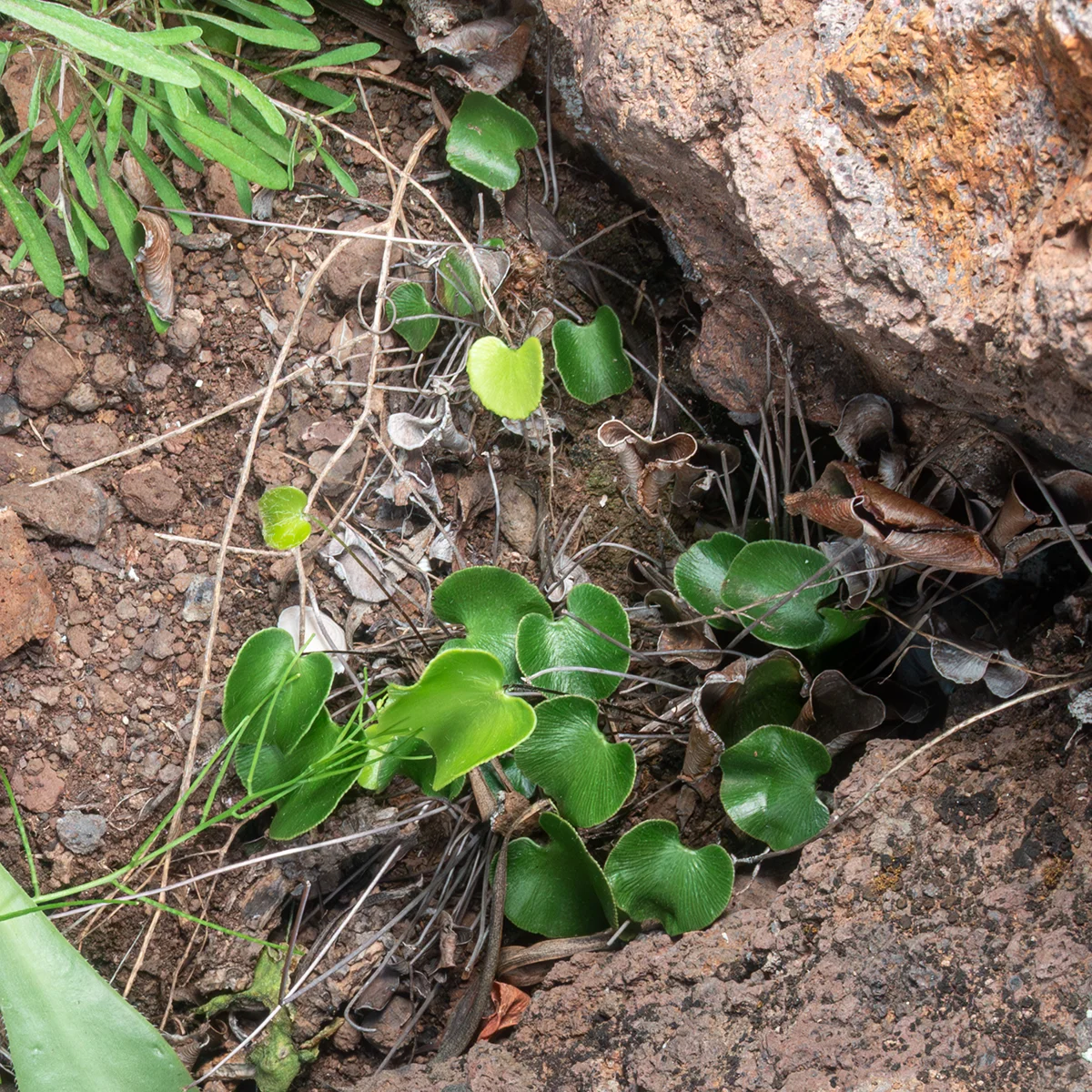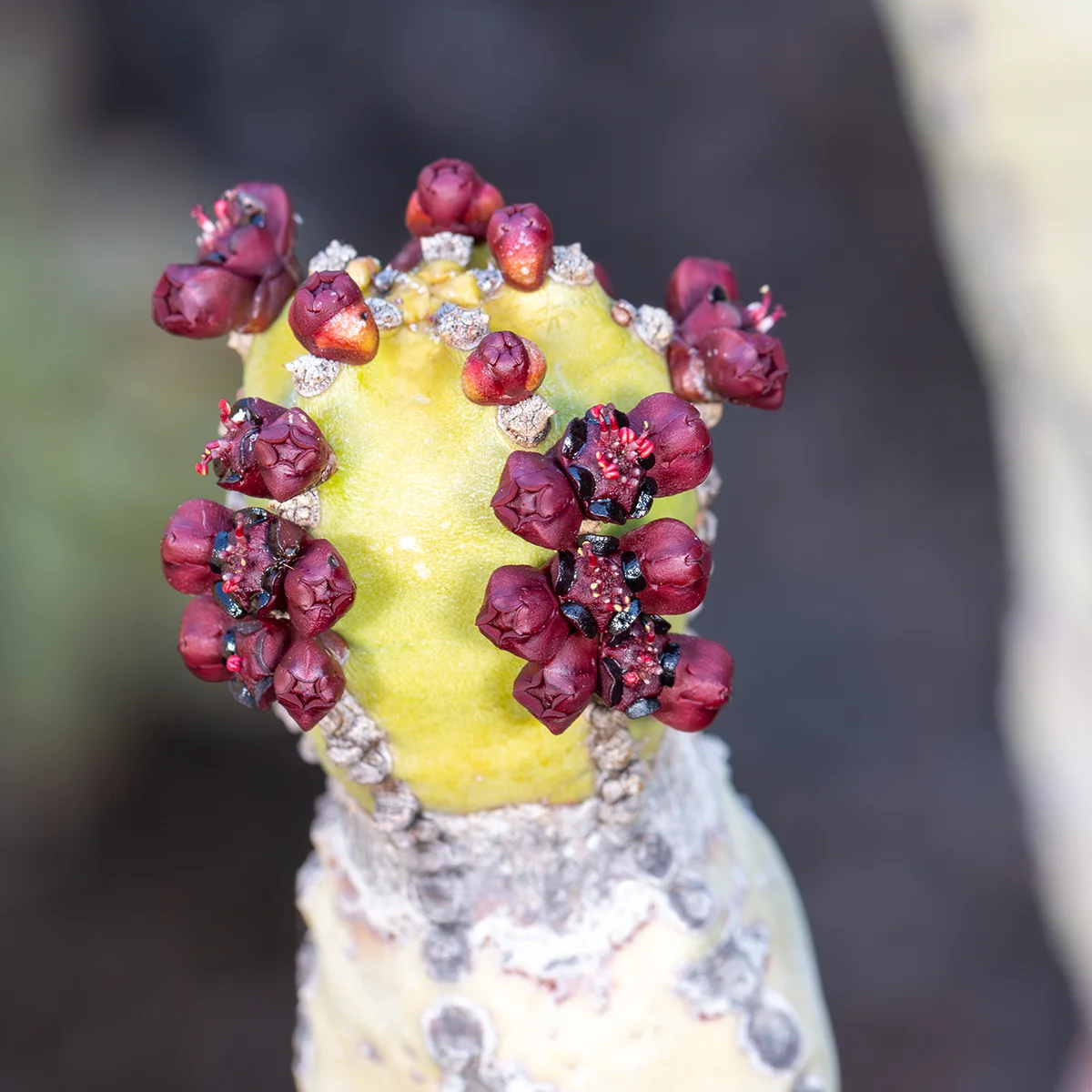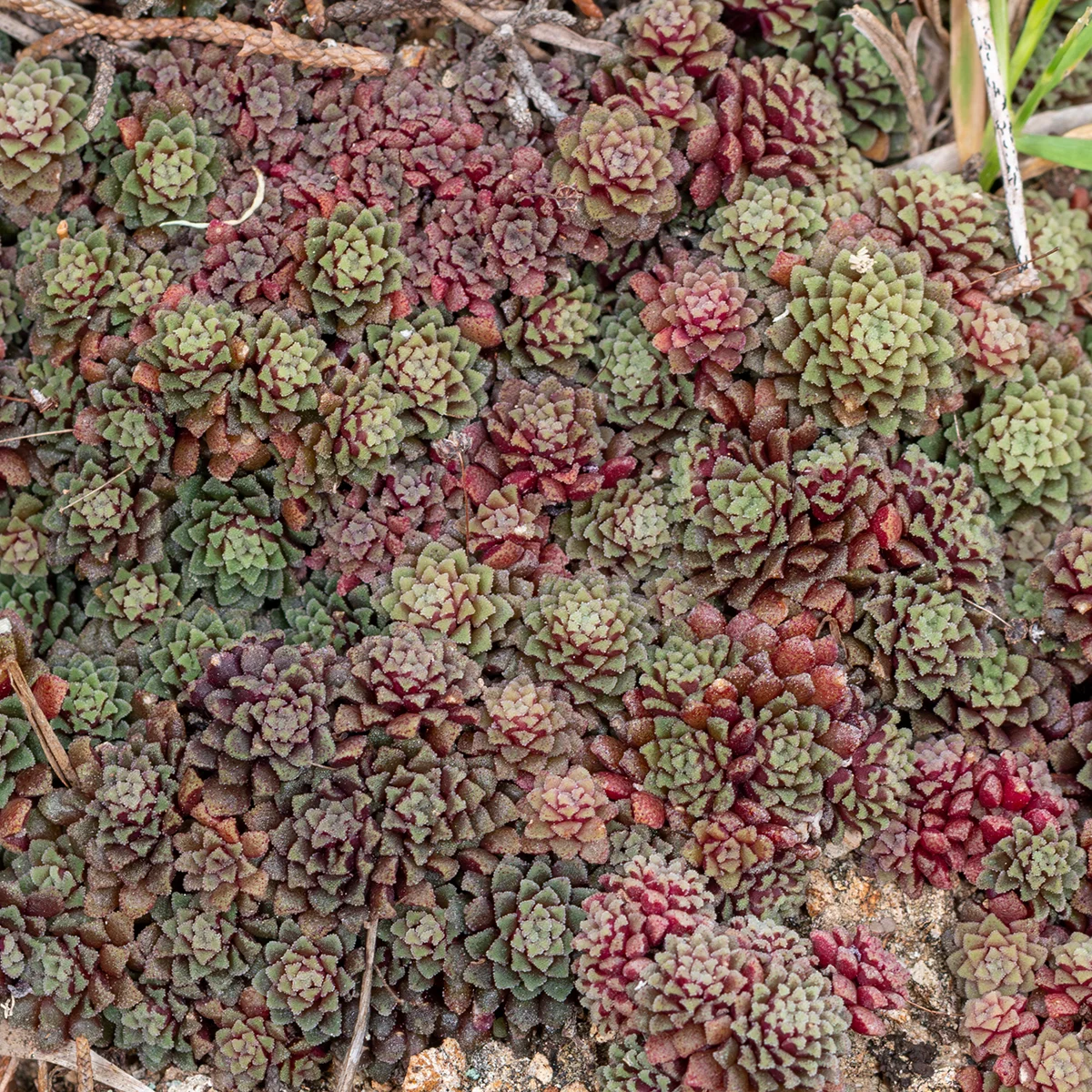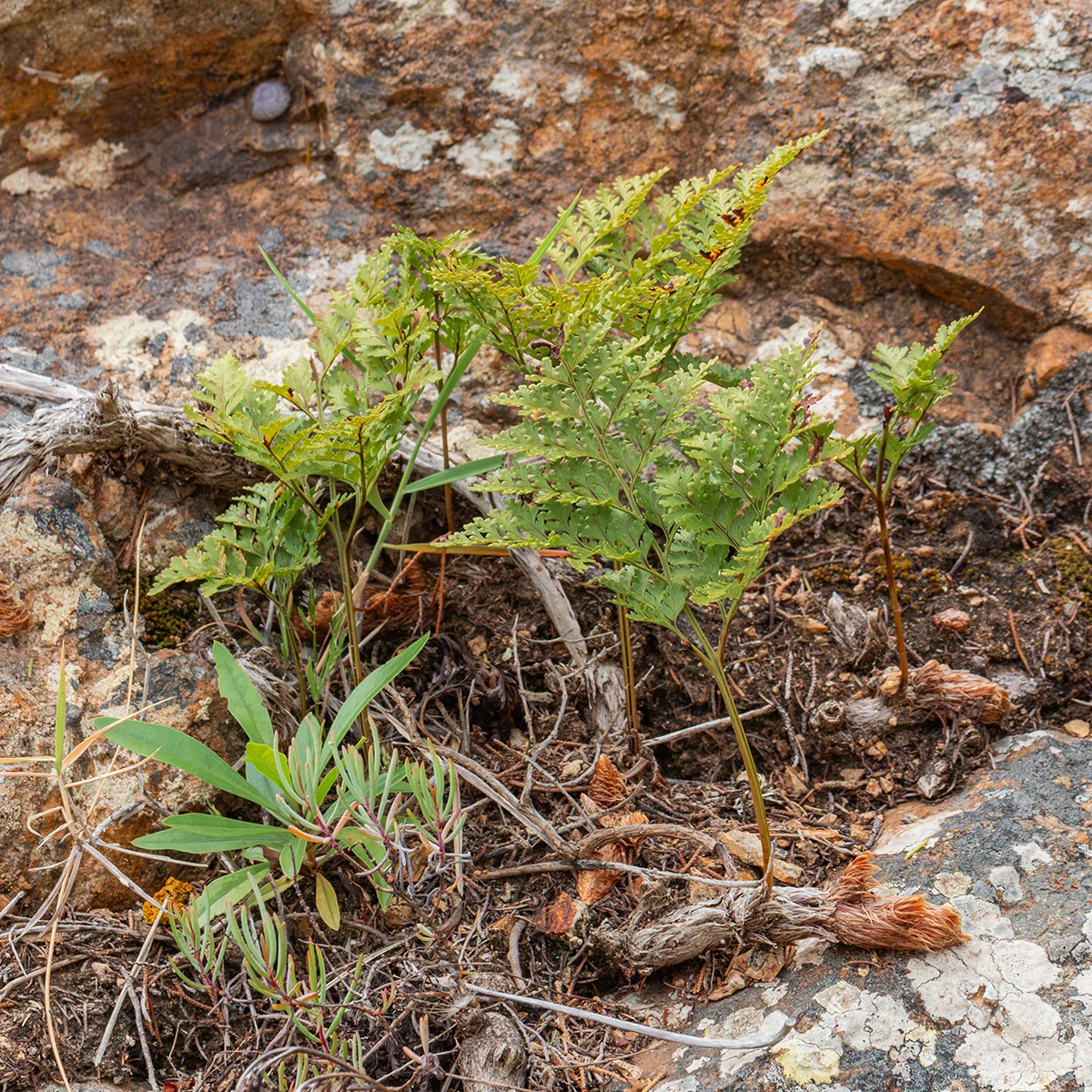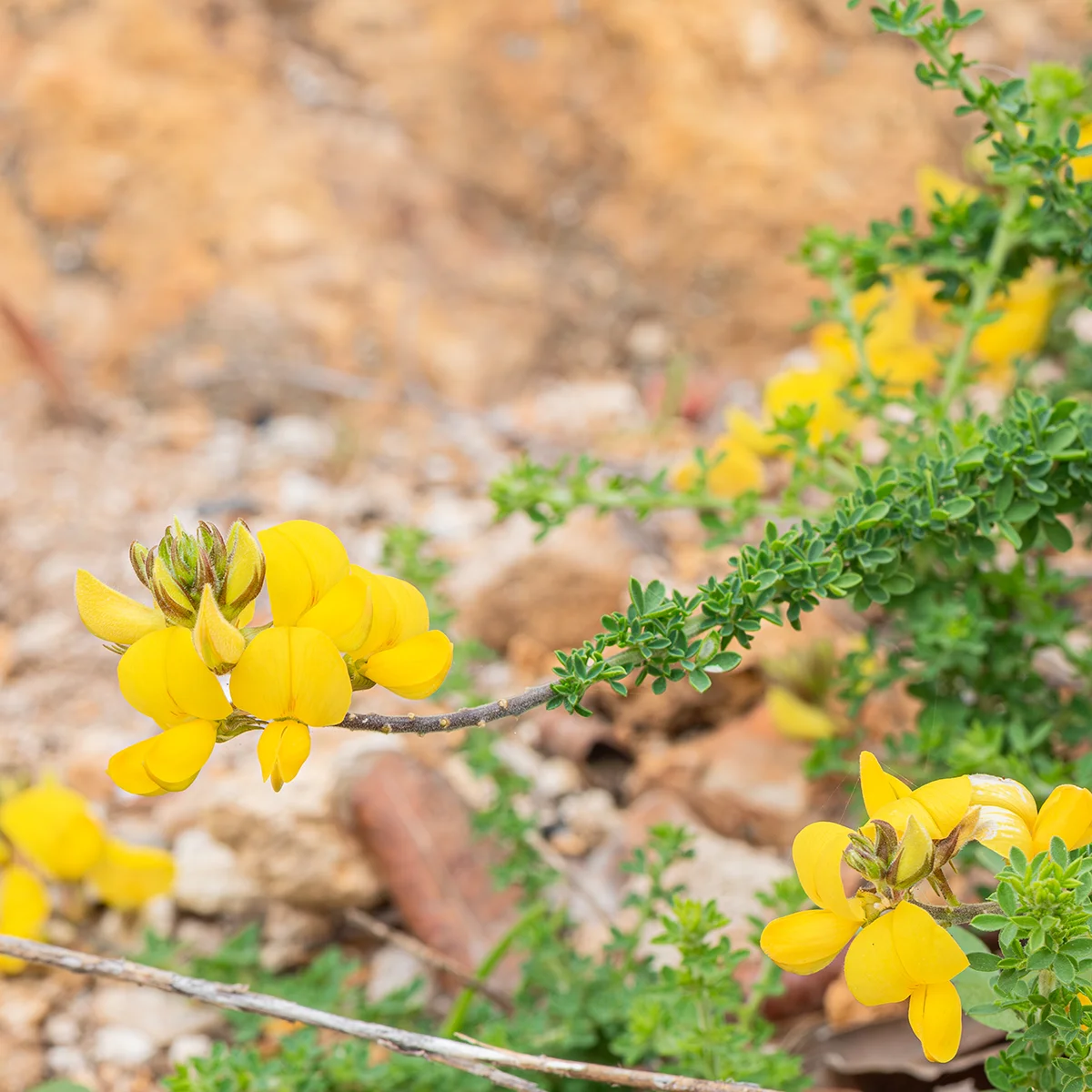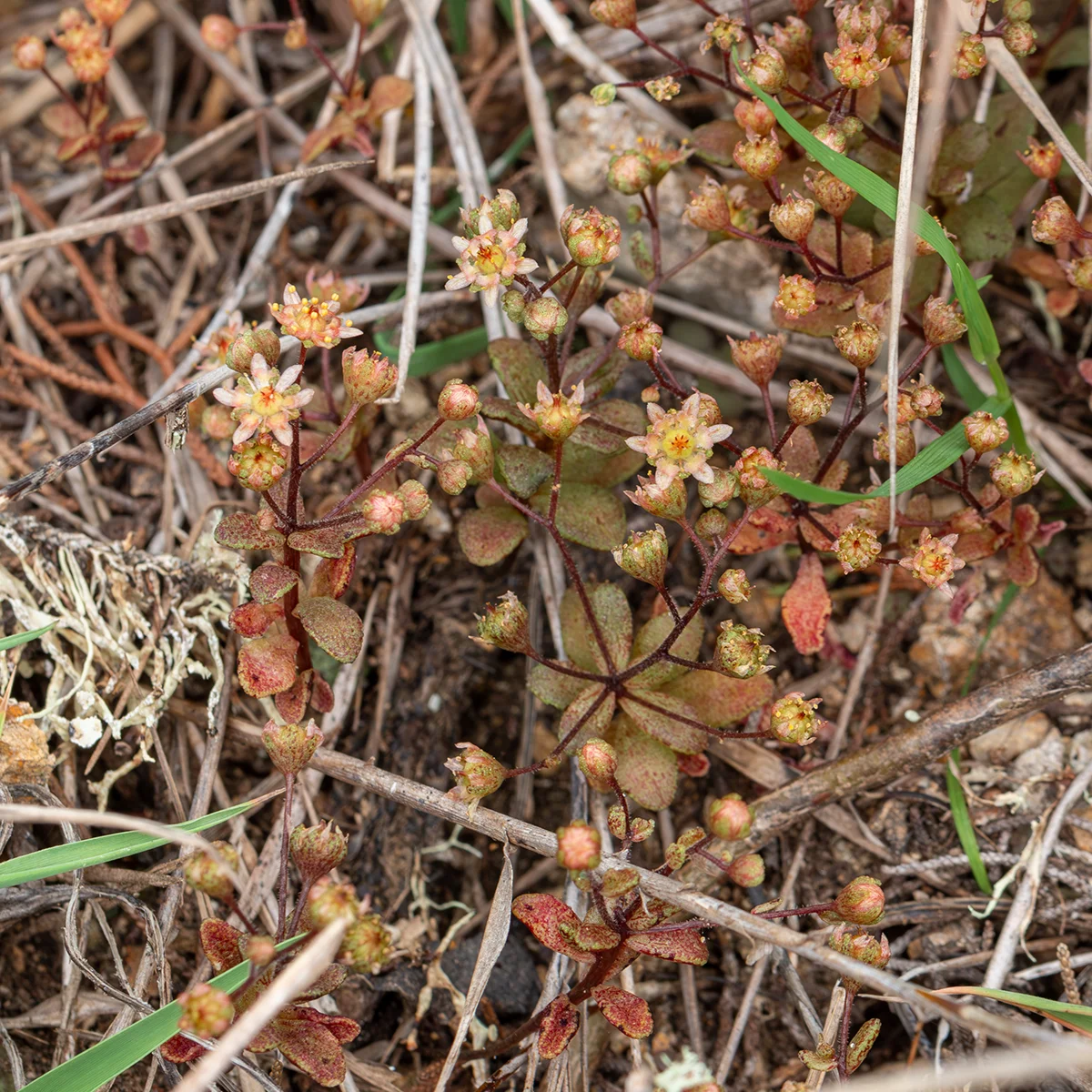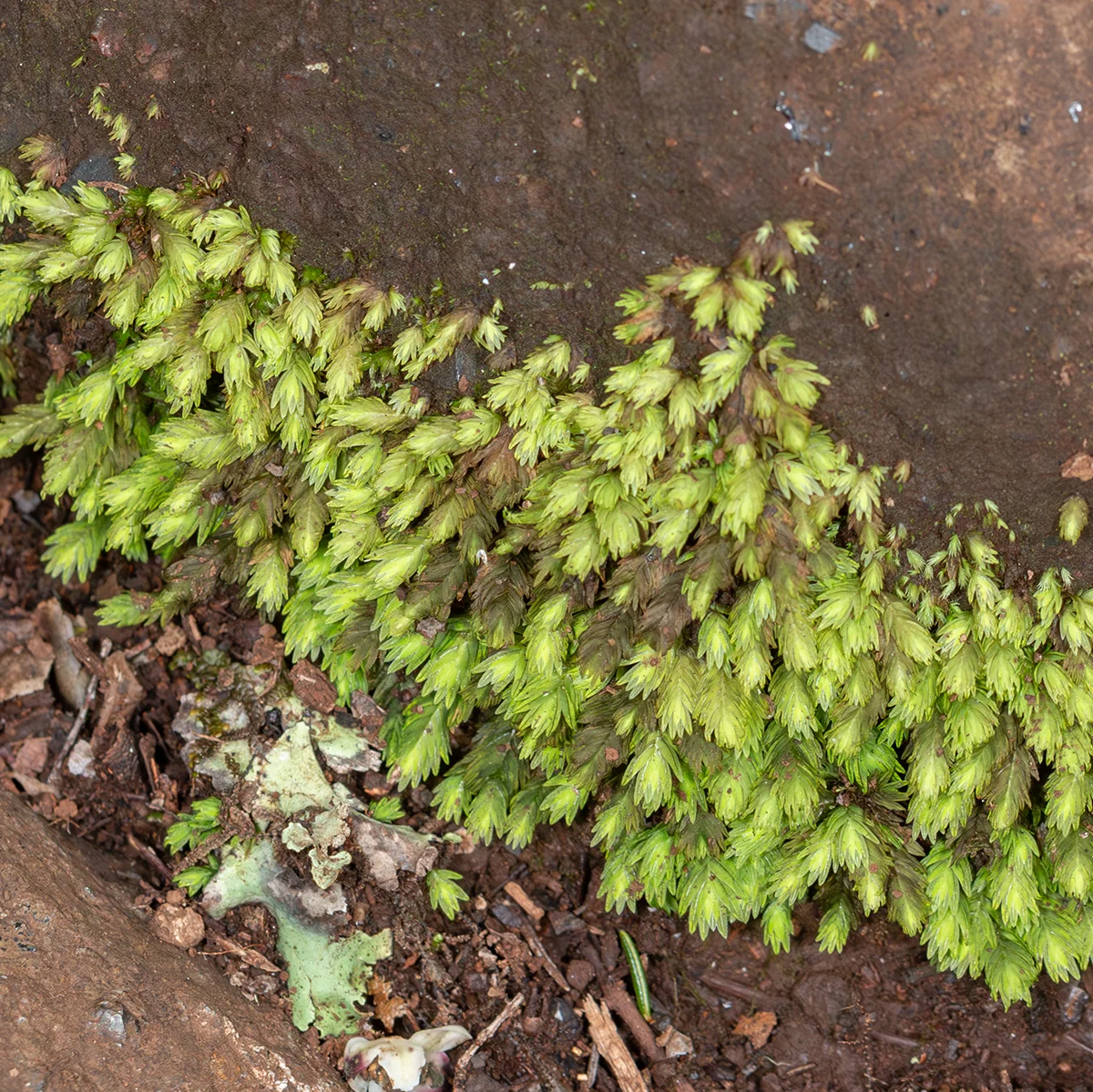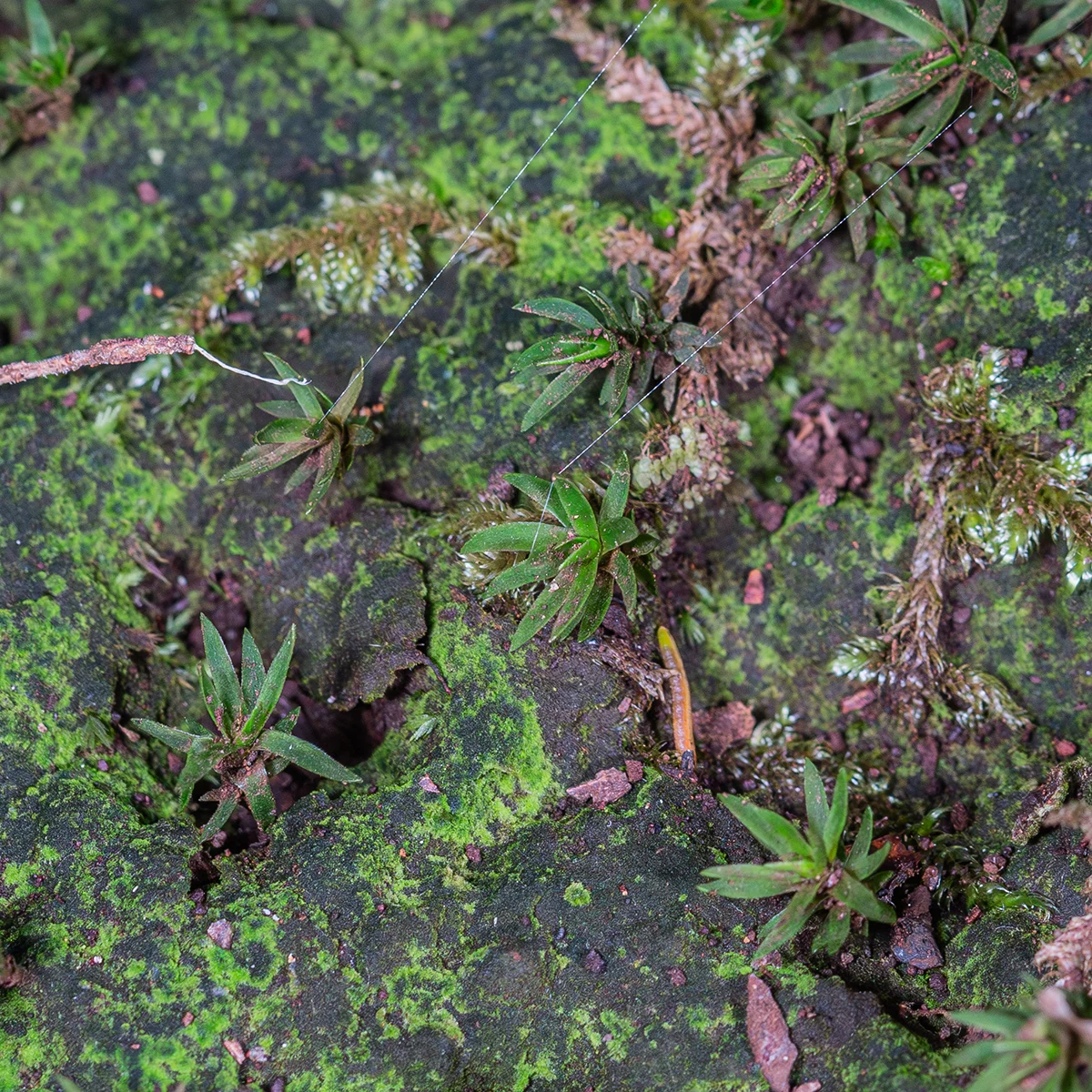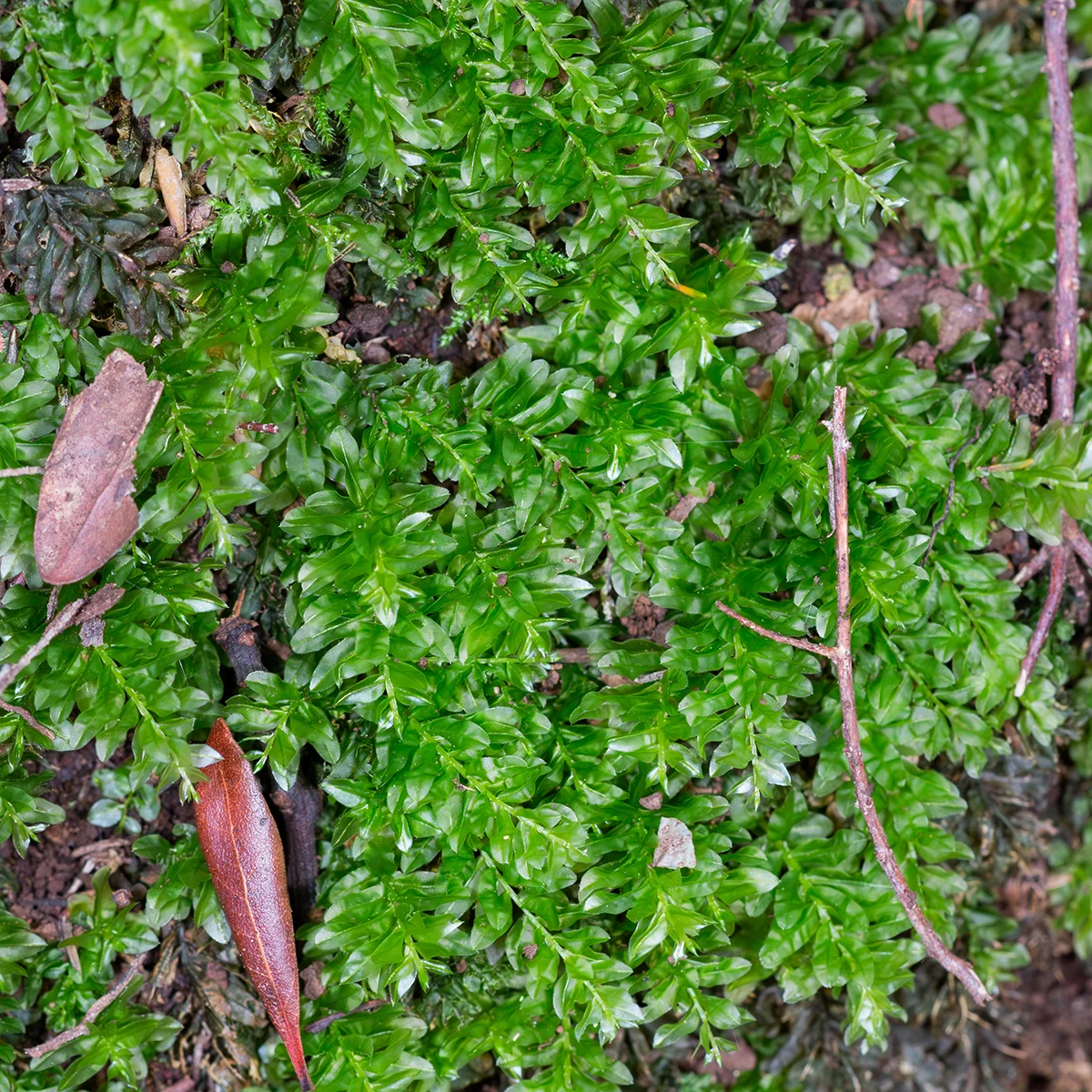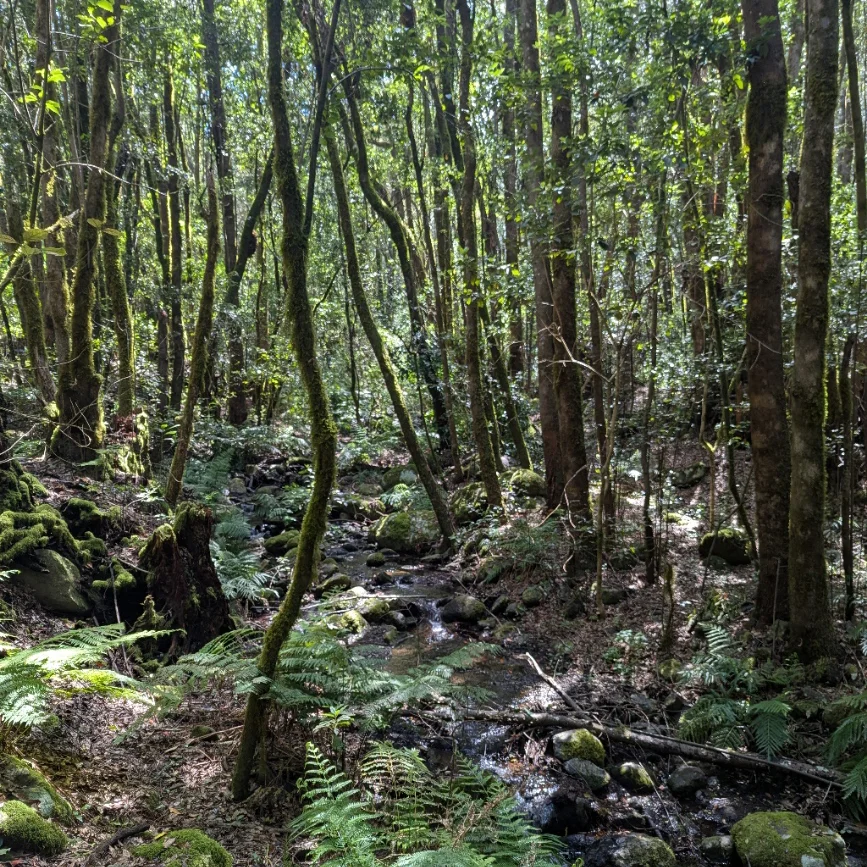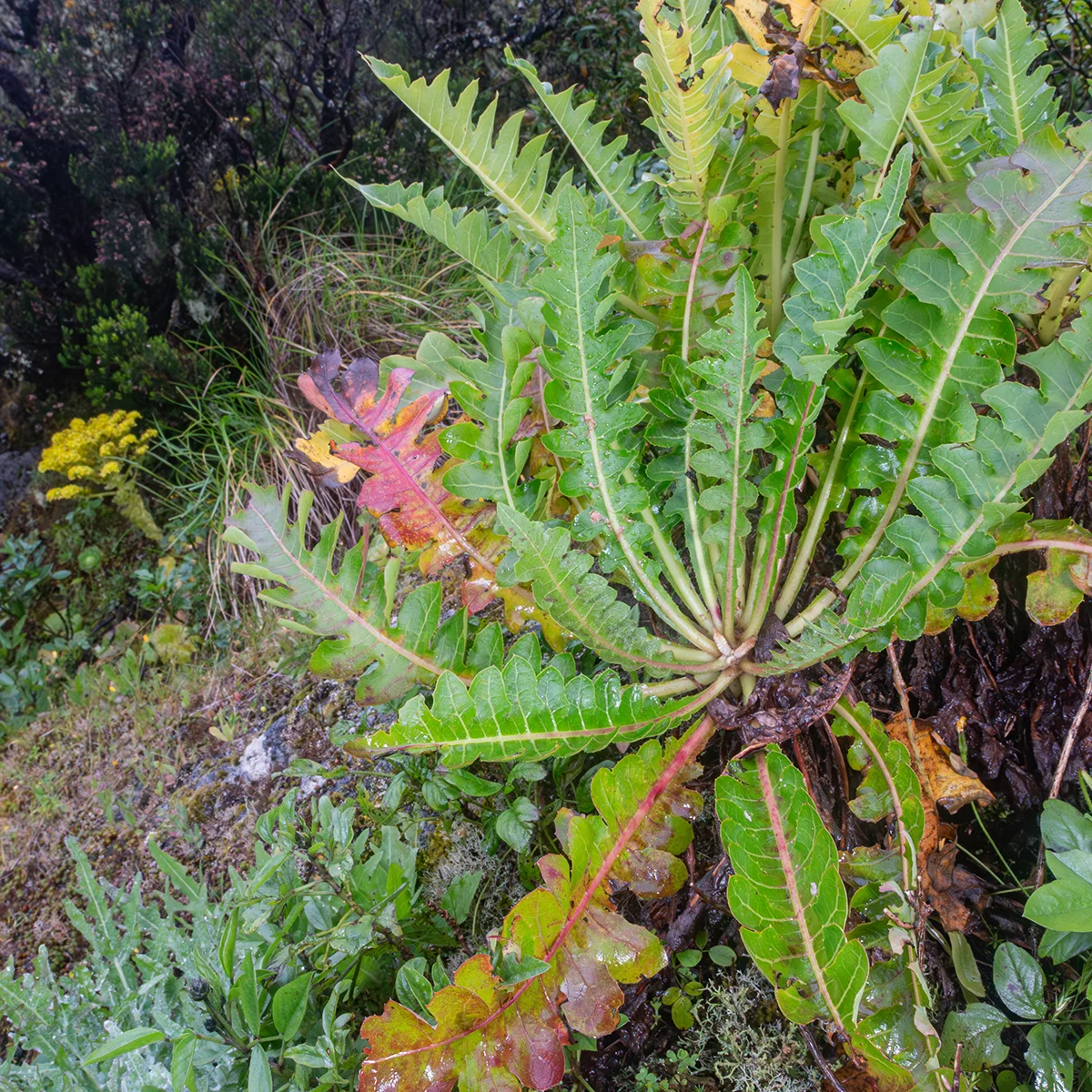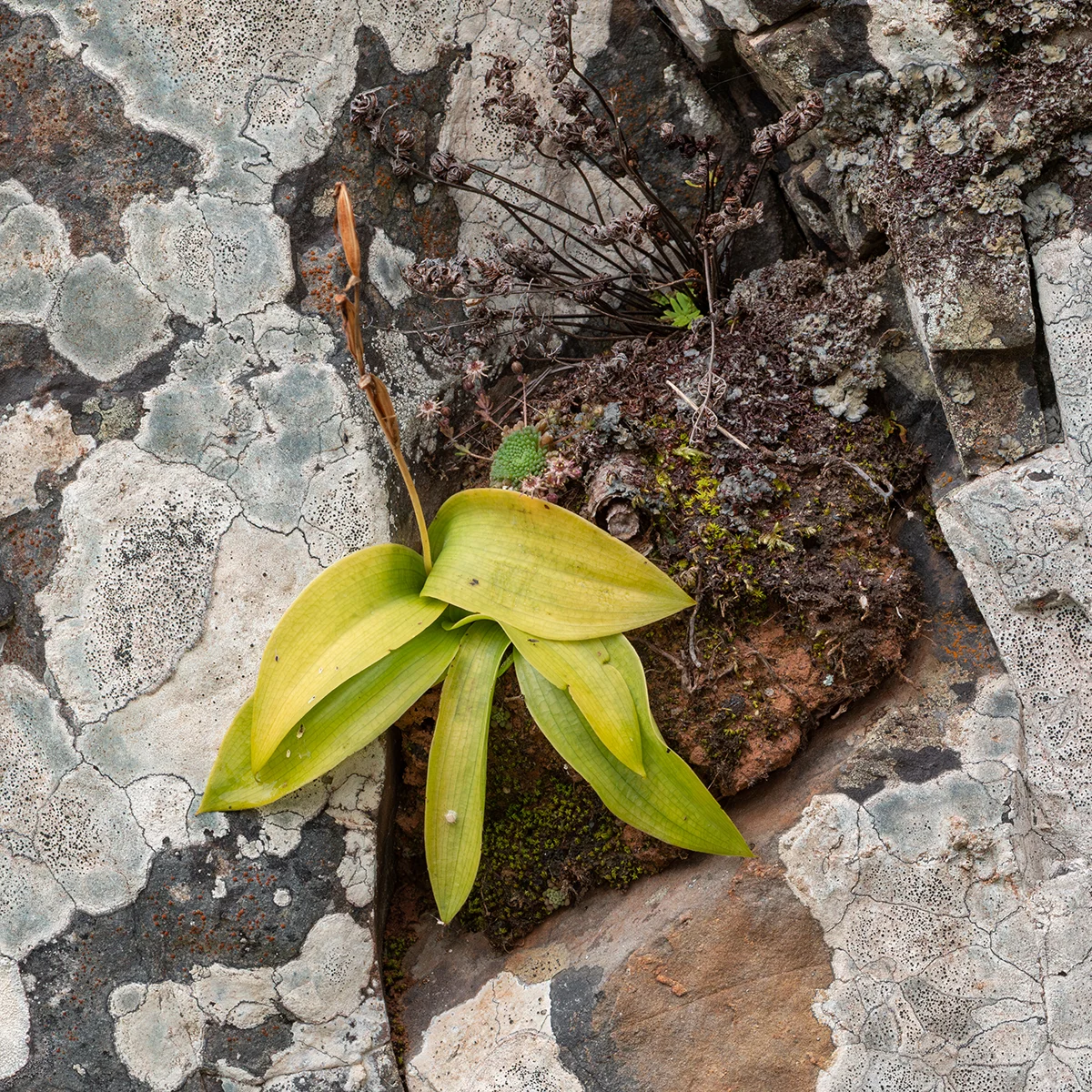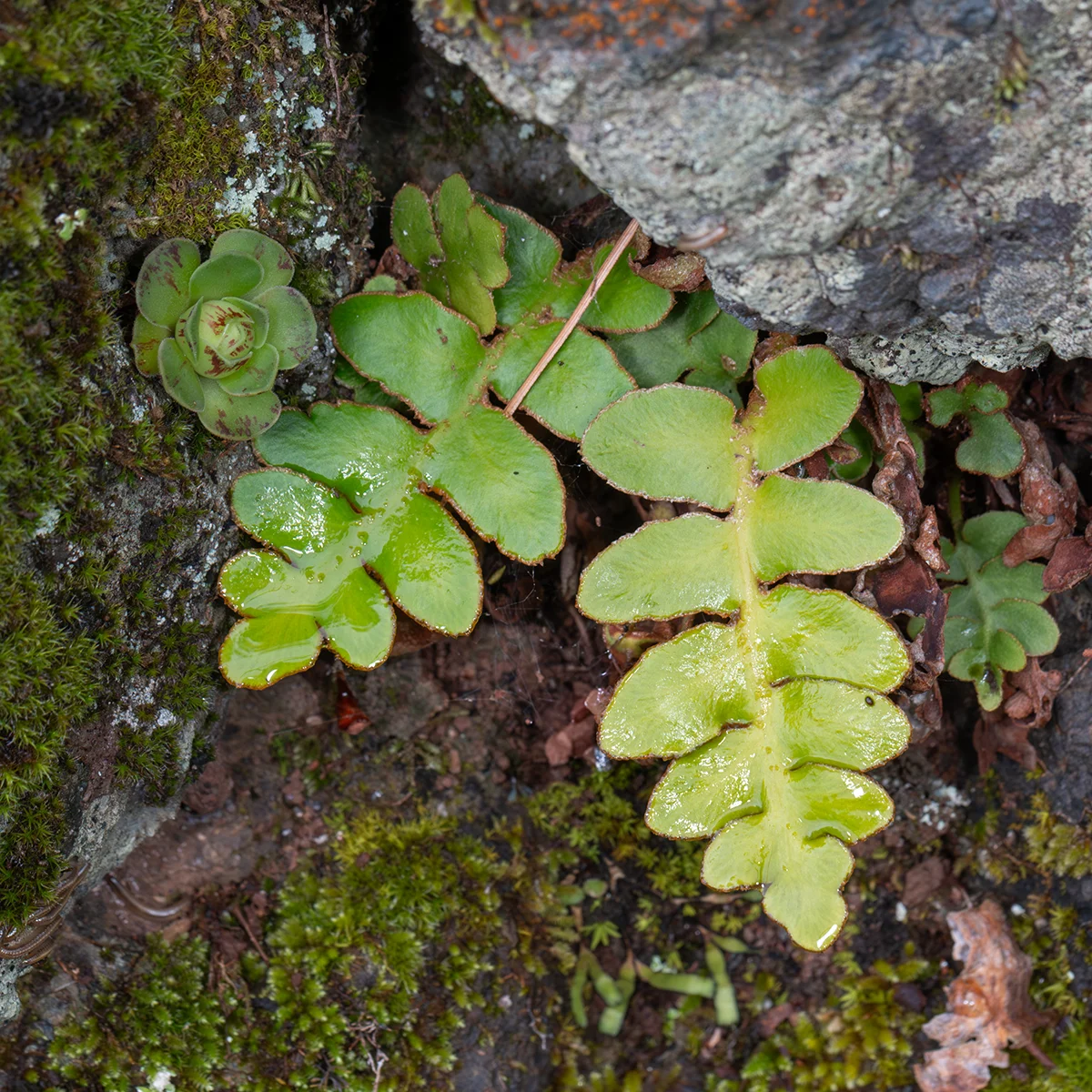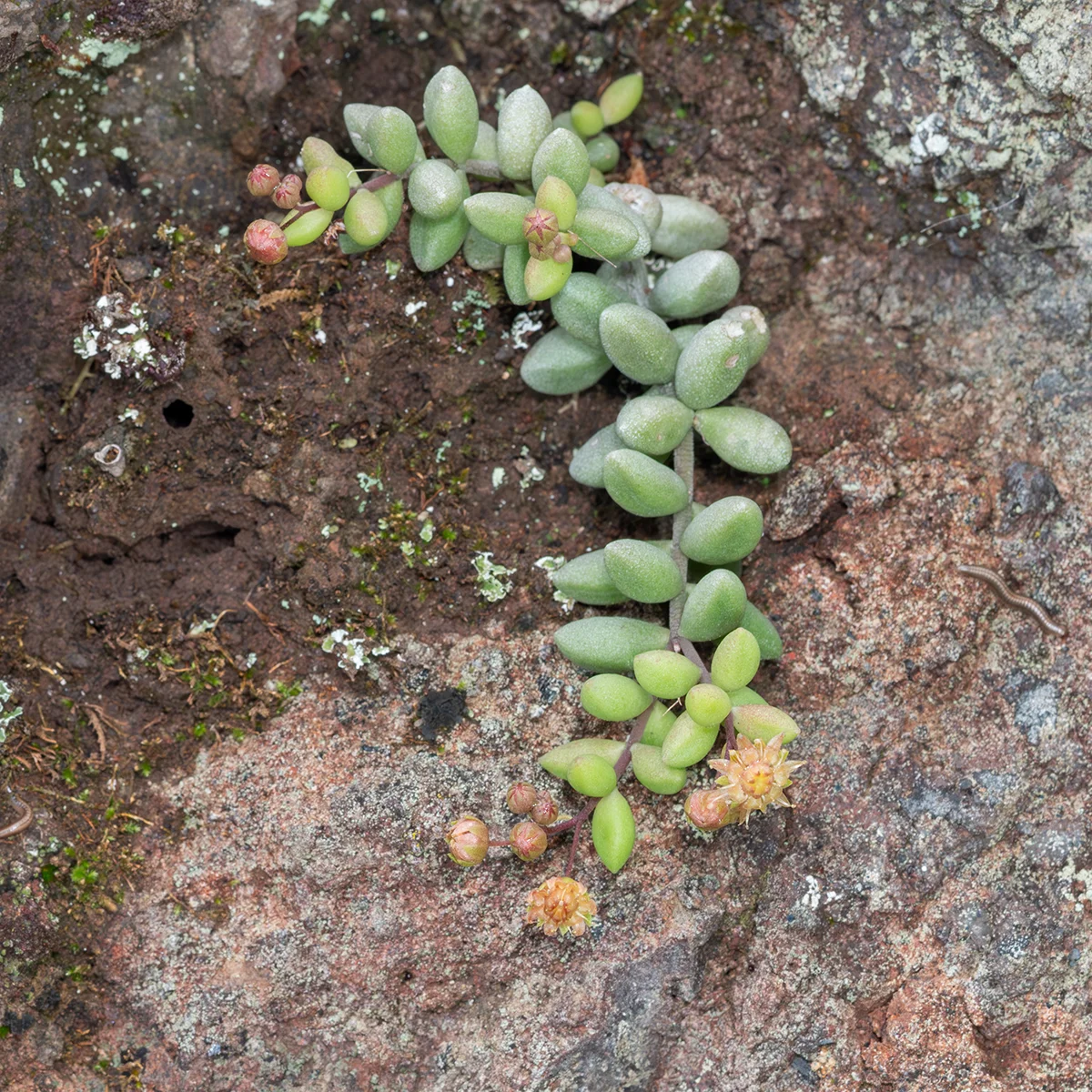2025.04 · La Gomera, Spain
La Gomera is a small island in the Canary Archipelago, situated just west of Tenerife. It is easily reached by a short flight from one of the main islands or a one-hour ferry ride from Los Cristianos in SW Tenerife.
Like the other Canary Islands, its northern slopes are shaped by moist trade winds, which foster the growth of lush laurel forests - laurisilva. In contrast, the southern and coastal areas are much drier, supporting xerophilous scrubland and a remarkable diversity of succulent species.
This was a relatively short (five-day) botanising trip during peak flowering season. Thanks to Charlie, Daisy, Nathan, and Pat for inviting me to join you!
Overview of the trip
1 · Barranco de Benchijigua
Starting from the small village of Pastrana, we walked through volcanic xerophilous scrubland, following the base of the barranco. Along the way, we encountered an abundance of Aeonium spp. and Euphorbia canariensis, as well as other species like Periploca laevigata. In slightly more sheltered spots, Monanthes pallens could also be found clinging to the volcanic rocks.
As we climbed towards Benchijigua, the vegetation began to shift, with scattered Pinus canariensis and flowering Cistus monspeliensis and other wildflowers appearing along the trail. On the return leg, we followed the Barranco de Guarimar back toward Pastrana. The route offered impressive views of the landscape, with many wild Phoenix canariensis, though the presence of invasive Agave americana and Opuntia ficus-indica was also striking.
2 · Vallehermoso
Another hike through xerophilous scrubland, but with noticeably different vegetation. Starting from Vallehermoso, the initial ascent was particularly interesting, with Davallia canariensis, Monanthes polyphylla, Aeonium canariense ssp. latifolium and A. decorum, and a few legumes scattered along the way. With the day slightly cloudier than the previous one, the botanising walk was very pleasant. As we gained elevation, a few new shrubs appeared, such as Rhamnus crenulata, followed by a moister shrubland dominated by Erica.
After reaching higher ground, we stopped for a break at the restaurant “Roque Blanco” before beginning our descent back again into the scrubland near Vallehermoso. We spotted some lovely wildflowers and Monanthes laxiflora specimens along the way.
3 · Garajonay National Park
Garajonay is one of Spain’s national parks and one of four located in the Canary Islands. The main habitat here is laurisilva, dominated by lauraceous species - especially Laurus novocanariensis, Ocotea foetens, Persea barbujana and P. indica - and the tree heath Erica arborea. You’ll also find a rich understory of mosses and ferns.
You can arrange a free guided tour through the park authorities. In our case, the guide kindly showed us the national park conservation nursery near El Cedro, where rare laurisilva species are propagated. Later, they guided us through the laurisilva around the Chapel of Lourdes, where we spotted some outstanding mosses and ferns along the way.
A big thank-you to our guide Ricardo, and to Sito from the conservation nursery, for showing us around and sharing their experiences.
4 · Garajonay II
Starting from Reventón Oscuro, where we parked the car, we walked through wind-exposed and foggy laurisilva, with relatively short but abundant Erica arborea specimens. We also encountered some nice Sonchus and Aeonium along the way. The rail brought us to several viewpoints near the roques — those massive vertical boulders that dot the island’s landscape.
After the roques a descent followed, leading through Pinus canariensis forest, where we found some beautiful specimens of Asplenium aureum. The path eventually reached the scrubland of La Laja. From there, the ascent began again, taking us back to Reventón Oscuro. Along the way, there are some great volcanic rock formations and a variety of Monanthes species.
5· Raso de la Bruma
This was a short route recommended to us. Having seen previous laurisilva in the previous 2 days, this area wasn’t as exciting. However, there were some nice specimens of Dioscorea edulis and a large population of Gennaria diphylla was also present along this trail.


